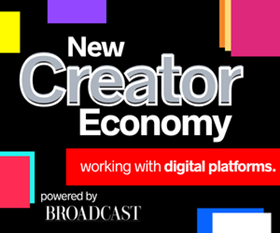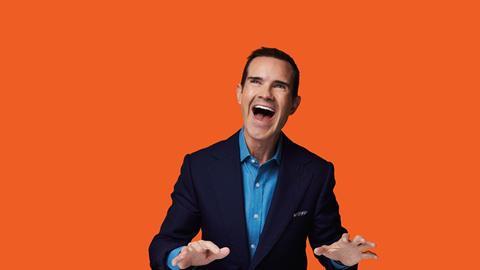Banijay Rights’ Shaun Keeble on the far-reaching role of distributors on YouTube and why they matter
In 2005, few imagined YouTube would become the world’s largest media platform.
Alongside its rise, the word ‘creator’ has become one of the most influential terms in today’s media landscape.
But somewhere along the way, its meaning narrowed, referring to individuals making shortform video and excluding crucial parts of the TV ecosystem, especially distribution, that have been shaping stories for decades. Is it time to rethink what the term ‘creator’ really means today?
Originally, ‘creator’ evoked bedroom vloggers making user-generated content (UGC). Today, the reality is far more complex.
Creators aren’t just making content, they are running businesses. Behind every viewed and shared video is a strategy for reach, monetisation, advertising and sponsorship.

Being a creator now means combining an authentic idea with practical operational needs. It’s a blend of creativity and commerce - and that’s something distributors have always understood.
Shaping audiences
Distributors are often seen as the business side of TV, focused on contracts and rights.
However, they have always shaped stories for audiences right around the globe. We commission, curate and adapt formats. We make decisions about what to promote and where, how to package content, and which stories work across diverse cultures.
We have always balanced creativity with commercial expertise just as the creators of today now do. The creator mindset isn’t new to us - it’s in our DNA.
Over the past decade, our YouTube business has grown into a powerhouse, generating billions of views monthly across hundreds, if not thousands, of channels.
We manage channels with 35 million subscribers and launch brand new concepts on an almost monthly basis, leveraging the depth of our catalogue and collaborating with our broadcaster partners and on-screen talent.
There are YouTube channels with subscriber counts larger than the population of entire countries which generate viewership and revenue through several means including YouTube Ad Sense, brand partnerships, product placement and memberships - and these aren’t just creator-led channels.
Whilst the creator economy is at an all-time high, TV producers, broadcasters and distributors alike have also managed to build trustworthy and commercially-driven YouTube Channels, providing viewers with another great source of content.
Cashing in on comedy clips
Take our recent work with a comedian Jimmy Carr. His official YouTube channel began as a home for licensed clips from TV appearances.
Those performed well - but we saw an opportunity to go further. In collaboration with Jimmy and his team, we created original strands designed specifically for YouTube, in doing this the channel has been transformed.
The results? Over 1.6 million subscribers and 400 million views in a year. This success reflects a truth about the creator economy.
“For distributors, YouTube is no longer a marketing afterthought - it’s a creative and commercial lab”
Creators connect directly and quickly with fans. Distributors traditionally work through broadcasters and territories - but the principle is the same. We understand audiences and the value and opportunity of quality content.
For years, YouTube was seen as a disruptor threatening premium content. Today, it is a powerful tool for extending IP life, testing ideas, and gathering audience insights. It is not replacing broadcast – yet - but the balance is shifting.
Audiences of all ages are engaging with the platform, and digital-first strategies are scaling. For distributors, YouTube is no longer a marketing afterthought; it’s a creative and commercial lab where archive meets innovation and new formats emerge without the risk of full-scale production.
If we redefine ‘creator’ to include everyone shaping stories, we foster collaboration. If distributors embrace that mindset, we don’t just keep pace with the industry - we help chart its course.
The future of entertainment isn’t separated creators and traditional players. It’s the blending of both - and maybe if we rethink what the word ‘creator’ really means, we will acknowledge what’s been true all along: we have and always will be creators.










No comments yet